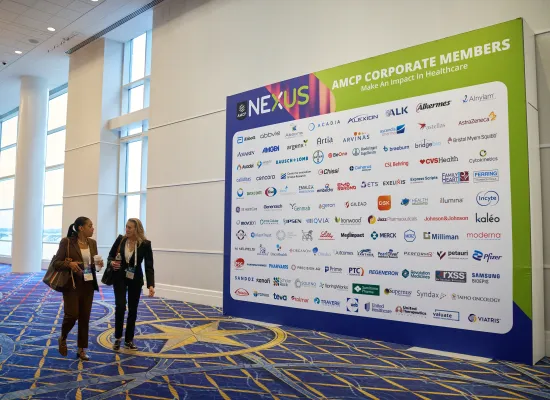
Addressing Increasing Costs and Spending on Pharmaceuticals Requires Multipronged Approach
A new article in Health Affairs (http://bit.ly/2BQlgo9) highlights the challenges that many health plans and payers face as spending on pharmaceuticals continues to rise. The report, which looked at total health care spending at Harvard Pilgrim Health Care (HPHC) from 2011 and 2016, found that spending on pharmaceuticals had increased to a full 25% of all dollars spent.
It comes as no surprise that the increase was due largely to rising prices of specialty medications. The report found that while average per-member-per-month (PMPM) spending increased by only 4% for nonspecialty medications (from $62.52 to $65.01), PMPM spending skyrocketed by 92% for specialty drugs (from $18.72 to $35.85).
AMCP has devoted a great deal of time and attention to the issue of rising drug costs, including in our responses to the HHS Blueprint to Lower Drug Prices and Reduce Out-of-Pocket Costs (http://bit.ly/2wwnfYZ). We believe it will take a multipronged approach to ensure that new medications remain accessible and affordable to all.
Key elements of the approach include: (1) the need to ensure a competitive marketplace that includes the wide availability and use of biosimilars, which have the potential to save tens of billions of dollars a year; (2) the need to develop and implement new reimbursement models, such as value-based contacting that pays for value rather than volume; and (3) the need to break down silos between the pharmacy and medical benefit to view the patient through a more holistic continuum of care.
In all of these areas, AMCP is taking a leading advocacy role.
On biosimilars, AMCP has created the only postmarketing research network that monitors the safety and effectiveness of biologics and their corresponding biosimilars. The Biologics and Biosimilars Collective Intelligence Consortium (BBCIC) conducts active surveillance on more than 150 million covered lives, giving patients and providers the assurances they need to confidently use these products. AMCP also is advocating for the FDA to issue final guidance on biosimilar interchangeability standards, which will significantly prompt utilization of these products. We look forward to participating in the FDA’s Sept. 4 public hearing on “Facilitating Price Competition and Innovation in the Biologics Products Marketplace.”
On innovative reimbursement models, AMCP recently held a two-day, multi-stakeholder Partnership Forum on new benefit designs and payment models for high-investment medications. The diverse group of experts representing all facets of health care discussed new strategies such as paying for “total cost of patient care” across the medical and pharmacy benefits, and increasing the use of value-based agreements, which base reimbursement on the value a product offers rather than simply its unit price.
On total costs of care, AMCP will hold another Partnership Forum in September that examines ways to effectively coordinate care management programs by integrating the medical and pharmacy benefits. Participants will lay out a roadmap to break down these silos and find ways to lower overall costs.
We agree with the Health Affairs blog statement that, “A high proportion of total spending may be appropriate if allocated to high-value medications that keep patients active, productive, and out of hospitals.” And we also agree that new strategies are needed to determine and pay for the value of medications in order to maintain access and affordability.
This is the challenge of our time, and one that AMCP fully embraces as we prepare for the next generation of health care.
Featured News & Resources
See Full CalendarAMCP Southwest Day of Education
Award Applications Open
Upcoming Events
AMCP offers a wide variety of educational opportunities, from events and webinars to online training.







